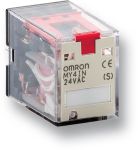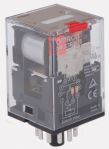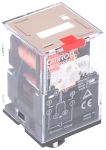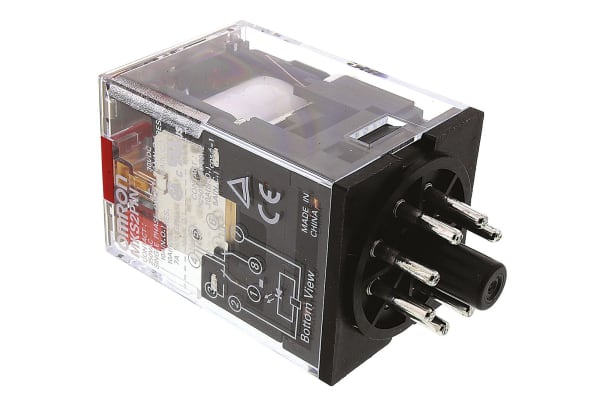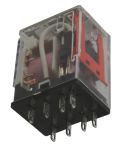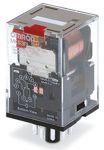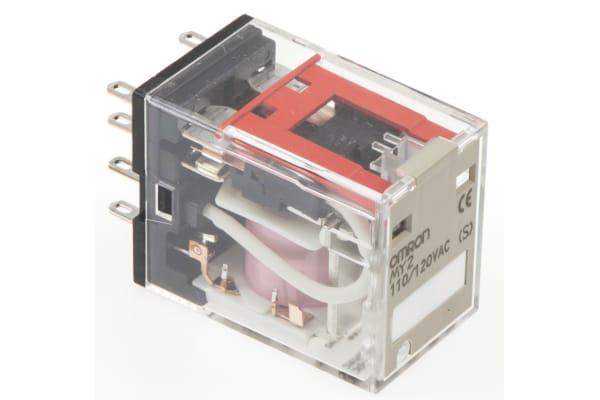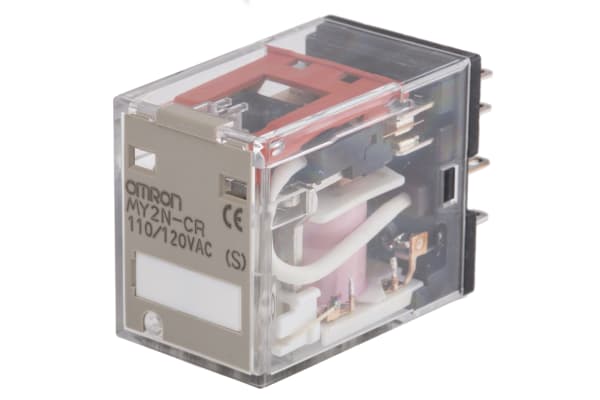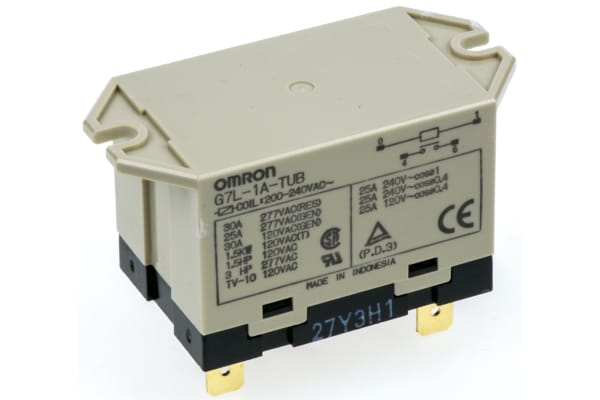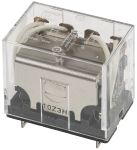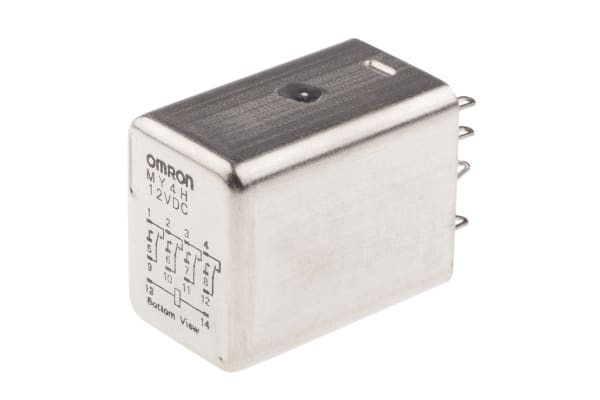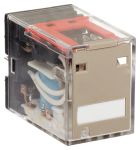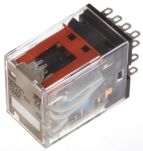Non-Latching Relays
Relays are electrical switches that are operated by electrical impulses with the primary function to open and close a circuit, they can also be referred to as industrial switches. There are 2 main types available, latching and non–latching relays.How do non-latching relays work?Non-latching relays are in a normally closed (NC) position and will stay in this state without power. When power passes through the circuit, the relay switched to a normally open (NO) position by using an internal coil to generate a magnetic force, holding this NO position. Once the current is turned off, it returns to the NC position. This makes non-latching relays well suited to push-button applications like keyboards and micro-controller input buttons.What are non-latching relays used for?Non-latching relays are highly durable and versatile components, making their performance long lasting and suitable for use in a wide range of applications, such as:Automotive enginesHousehold appliancesIndustrial machineryMedical equipmentTelecommunications equipmentWhat is the difference between latching and non-latching relays?Both types of relays in similar in design and function, however, a significant difference between them is that a latching relay will remain in the last position it when it was last powered, whereas a non-latching goes back to its normal position. This makes each more type of relay suitable for different applications. Considerations when selecting a relayWhen choosing a relay, it is important to consider a number of specifications to ensure it is fit for purpose, some factors include:Coil voltage – the required voltage to actuate the switching mechanism. If a voltage is too high this could damage the components, if it is too low then it will not actuate. Contact configuration – This is the state the contacts are in without power. For example SPST, single pole single throw.Contact material – the relay contacts are available in many materials that have certain properties. Common materials are gold, silver, tin oxide and nickel Coil power – the amount of power (watts) the coil operates at. This must match the power in the circuit for correct function. Coil resistance – the amount of resistance (ohms) in the circuit that the coil creates.
-
Omron, 110/120V ac Coil Non-Latching Relay DPDT, 5A Switching Current Plug In, 2 Pole, MY2-GS 110/120VAC
IDR130,588.05 -
Omron, 110V ac Coil Non-Latching Relay 3PDT, 10A Switching Current PCB Mount, 3 Pole, MKS3PI5AC110
IDR213,241.37 -
Omron, 110V ac Coil Non-Latching Relay 3PDT, 10A Switching Current PCB Mount, 3 Pole, MKS3PIN-5 AC110
IDR252,155.56 -
Omron, 110V ac Coil Non-Latching Relay DPDT, 10A Switching Current Plug In, 2 Pole, MKS2PI AC110
IDR190,270.46 -
Omron, 110V ac Coil Non-Latching Relay DPDT, 10A Switching Current Plug In, 2 Pole, MKS2PINAC110
IDR225,828.17 -
Omron, 110V ac Coil Non-Latching Relay DPDT, 5A Switching Current Plug In, 2 Pole, G2R-2-SN 110AC(S)
IDR262,120.11 -
Omron, 110V ac Coil Non-Latching Relay SPDT, 10A Switching Current PCB Mount Single Pole, G2R-1-SNI 110AC(S)
IDR226,247.73 -
Omron, 110V ac Coil Non-Latching Relay SPDT, 10A Switching Current Plug In Single Pole, G2R-1-SN 110AC(S)
IDR163,838.18 -
Omron, 110V dc Coil Non-Latching Relay DPDT, 10A Switching Current Plug In, 2 Pole, LY2ND2DC100110
IDR412,951.93 -
Omron, 110V dc Coil Non-Latching Relay DPDT, 5A Switching Current Plug In, 2 Pole, MY2DC100110S
IDR80,450.63 -
Omron, 120V ac Coil Non-Latching Relay 3PDT, 10A Switching Current Plug In, 3 Pole, MKS3PI-5 AC120
IDR280,056.30 -
Omron, 120V ac Coil Non-Latching Relay 4PDT, 5A Switching Current Plug In, 4 Pole, MY4IN AC110/120(S)
IDR197,402.98 -
Omron, 120V ac Coil Non-Latching Relay 4PDT, 5A Switching Current Plug In, 4 Pole, MY4N-CR 110/120AC(S)
IDR360,926.49 -
Omron, 120V ac Coil Non-Latching Relay DPDT, 10A Switching Current Plug In, 2 Pole, MY2 AC110/120(S)
IDR160,271.92 -
Omron, 120V ac Coil Non-Latching Relay DPDT, 10A Switching Current Plug In, 2 Pole, MY2N AC110/120(S)
IDR157,125.22 -
Omron, 120V ac Coil Non-Latching Relay DPDT, 10A Switching Current Plug In, 2 Pole, MY2N-CR AC110/120(S)
IDR391,554.37 -
Omron, 120V ac Coil Non-Latching Relay SPNO, 30A Switching Current Panel Mount Single Pole, G7L-1A-TUB 100/120AC
IDR376,869.77 -
Omron, 12V ac Coil Non-Latching Relay 4PDT, 5A Switching Current Plug In, 4 Pole, MY4 12AC(S)
IDR109,295.38 -
Omron, 12V dc Coil Non-Latching Relay 4PDT, 10A Switching Current Plug In, 4 Pole, LY4-J DC12
IDR475,781.04 -
Omron, 12V dc Coil Non-Latching Relay 4PDT, 3A Switching Current Panel Mount, 4 Pole, MY4H-US DC12
IDR1,410,246.05 -
Omron, 12V dc Coil Non-Latching Relay 4PDT, 5A Switching Current Plug In, 4 Pole, MY4 12DC(S)
IDR181,249.92 -
Omron, 12V dc Coil Non-Latching Relay 4PDT, 5A Switching Current Plug In, 4 Pole, MY4IN 12DC(S)
IDR230,548.22 -
Omron, 12V dc Coil Non-Latching Relay 4PDT, 5A Switching Current Plug In, 4 Pole, MY4N DC12 (S)
IDR144,538.42 -
Omron, 12V dc Coil Non-Latching Relay 4PDT, 5A Switching Current Plug In, 4 Pole, MY4N-D2 12DC(S)
IDR346,766.34



